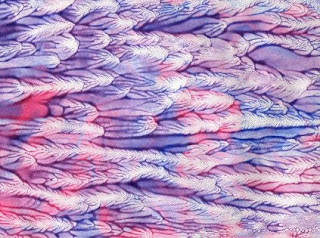Speculative techniques of mapping may generate new practices of creativity, practices that are expressed not in the invention of novel form but in the productive reformulation of what is already given.
- James Corner
The Agency of Mapping: Speculation, Critique, & Invention, 1999
There are internal and external motivators that must work together in the assembly of the landscape. The internal motivator is the combinatorial logic of units and clusters (geometry guides connections between parts). The external motivators are the constructional requirements outlined below (dimensions, density, solidity) and organizational qualities discovered in the dunescape maps. This is where maps become instrumental. Identify an organizational quality in one or both dunescape maps; use it as an organizational criterion for the landscape.
Lars Spuybroek / NOX
The landscape will be considered a process of assembly where the behavior of a material gives rise to form. The images above both show results of processes where the behavior of a material (wet paint in the decalcomania painting; rubber tubes and wet lacquer in the Soft Office) produces form as it is worked. The combinatorial potentials created by complex geometries in your units and clusters are also a type of material. This material will produce form as it is worked.
Assemble your most successful cluster into a landscape by knitting individually assembled clusters together or by continuing an accumulation of units onto a cluster. In either case, combinatorial rules must be clearly articulated and they must produce a legible pattern in the landscape.
The landscape will be 24” long x 24” wide x approx. 8” deep. X and Y dimensions must be strictly adhered to. The Z dimension is flexible, some zones may be deep and some may be shallow. All connections must be strong. The landscape must be dense, solid, durable and easy to transport.
Go here for examples of the final landscape models.
MATERIAL ANALYSIS
Cluster drawings will now evolve into diagrams that unpack how the unit, cluster, and landscape are assembled. Indicate how interfacing units form clusters (i.e. how units attach, rotate, change size, etc. within the cluster) and how cutting and reattaching sections of molding profiles form units. Indicate where and how clusters interface with each other to form the landscape. Develop notations using line-weight, line-type, tone, nodes, vectors, cutting planes, angle indicators, etc. to communicate this information.
Go here for examples of the final material analysis drawings.


No comments:
Post a Comment